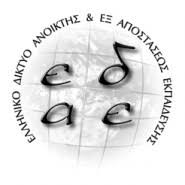This action research study investigated the application and use of a blended collaborative learning model as a vehicle for developing in-service teachers’ action research skills in afield-based Master’s program. It also explored the roles of the instructor through the lens of the ‘four hats’ metaphor (Bonk et al., 2001). Research results endorsed the tremendous potential of both the collaborative and blended aspects of the selected instructional approach towards the creation of an interactive community of learners, as well as the development of deeply reflective thinking skills. From the course design perspective, this instructional approach facilitated the transformation of an action research training course to what Laurillard (2002) calls the “reflective practicum”. For this transition to occur, three highly significant conditions need be in place and work in parallel, namely the students’ own motivation and drive to achieve professional growth as opposed to those students that just wanted to complete the degree; as well as a positive student-instructor relationship, and the instructor’s continuous support, input and guidance.Key words: Blended Learning, Action Research, CMC, Collaborative Learning, Higher Education
(EL)
This action research study investigated the application and use of a blended collaborative learning model as a vehicle for developing in-service teachers’ action research skills in a field-based Master’s program. It also explored the roles of the instructor through the lens of the ‘four hats’ metaphor (Bonk et al., 2001). Research results endorsed the tremendous potential of both the collaborative and blended aspects of the selected instructional approach towards the creation of an interactive community of learners, as well as the development of deeply reflective thinking skills. From the course design perspective, this instructional approach facilitated the transformation of an action research training course to what Laurillard (2002) calls the “reflective practicum”. For this transition to occur, three highly significant conditions need be in place and work in parallel, namely the students’ own motivation and drive to achieve professional growth as opposed to those students that just wanted to complete the degree; as well as a positive student-instructor relationship, and the instructor’s continuous support, input and guidance.Key words: Blended Learning, Action Research, CMC, Collaborative Learning, Higher Education
(EN)

